'I want to get into these images and perfume them': Linder's retrospective opens at the Hayward Gallery
'Linder: Danger Came Smiling' gathers fifty years of the artist's work at the Hayward Gallery. We meet the punk provocateur ahead of her first retrospective
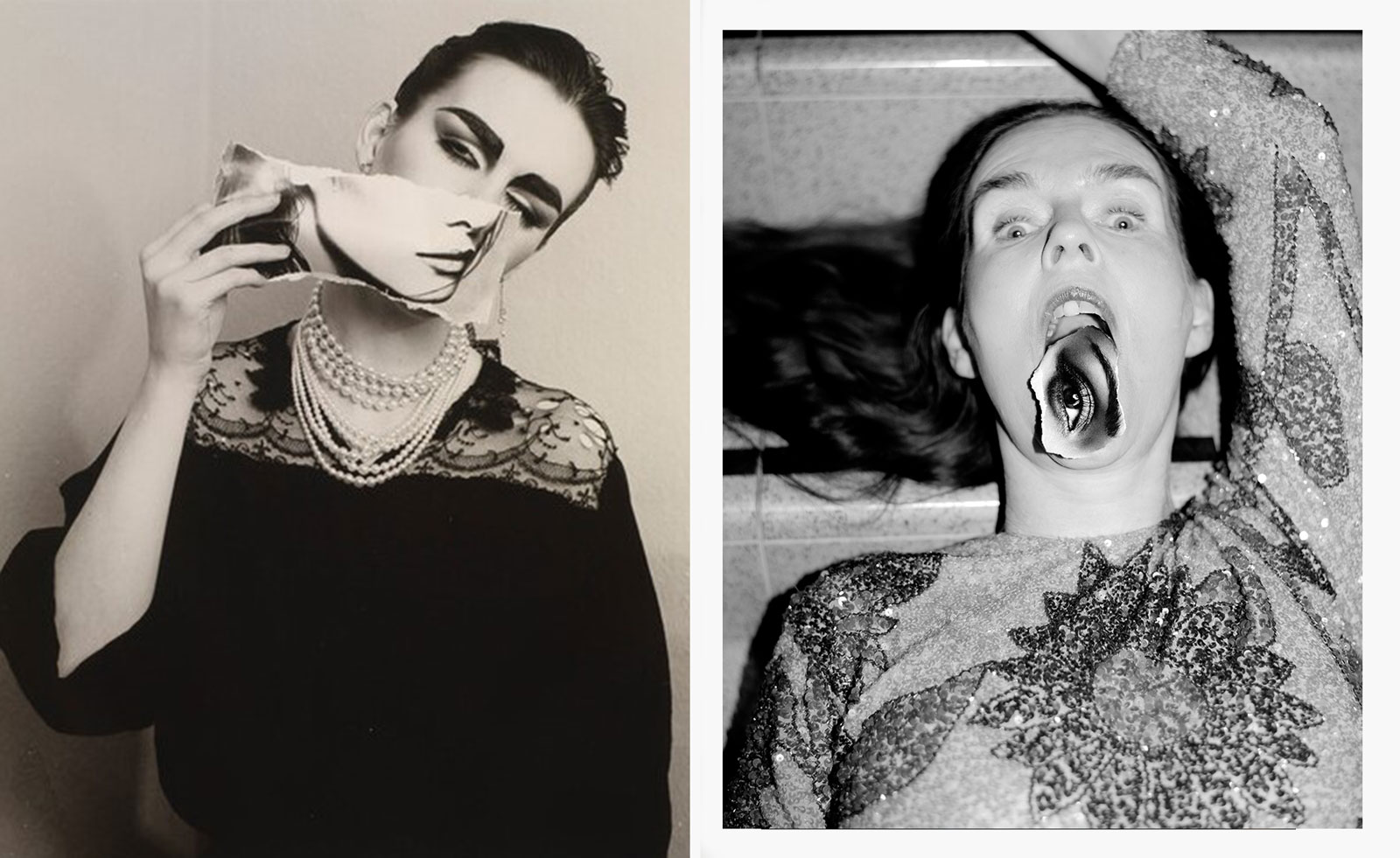
I meet Linder at the cafe at the Hayward Gallery, on the opening day of her - surprisingly – first London retrospective. She’s dressed for battle, or for protection, in a glittering Ashish top that lends her a reassuring physical weight. (‘It’s like those weighted blankets in a way. I feel invincible! Not that I’m under attack,’ she says, as we say hello.)
It’s a big moment for the Liverpool-born artist, who is marking her seventieth year with a fifty-year multidisciplinary retrospective. Tracing her beginnings on the punk music scene, via her photomontages and eclectic embrace of references, from pornography to fashion, ballet, fetish, weightlifting and art history, it culminates with her newest pieces, deepfake images of herself.
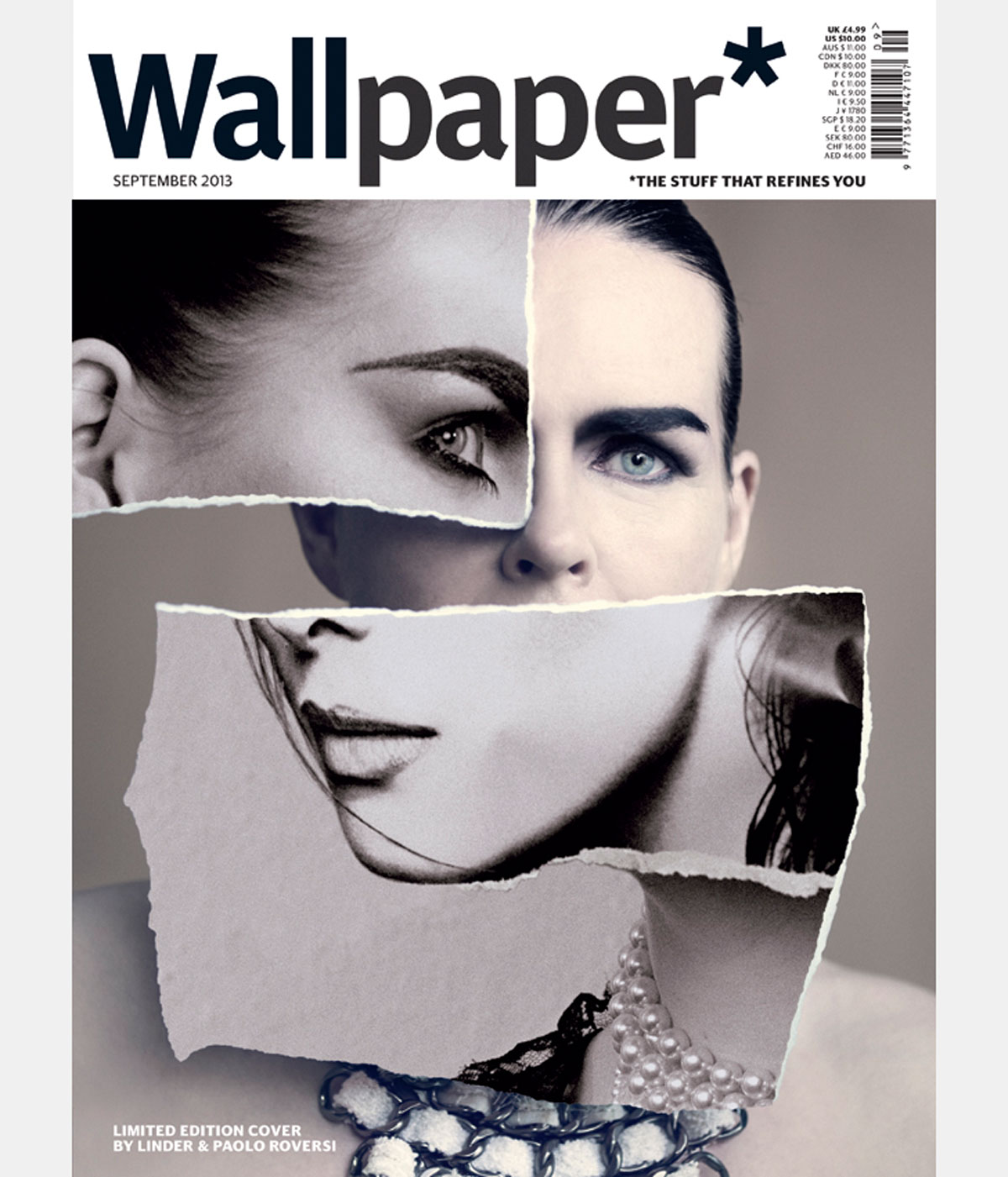
Linder's September 2013 Wallpaper* cover, created in collaboration with Paolo Roversi and Isabelle Kountoure
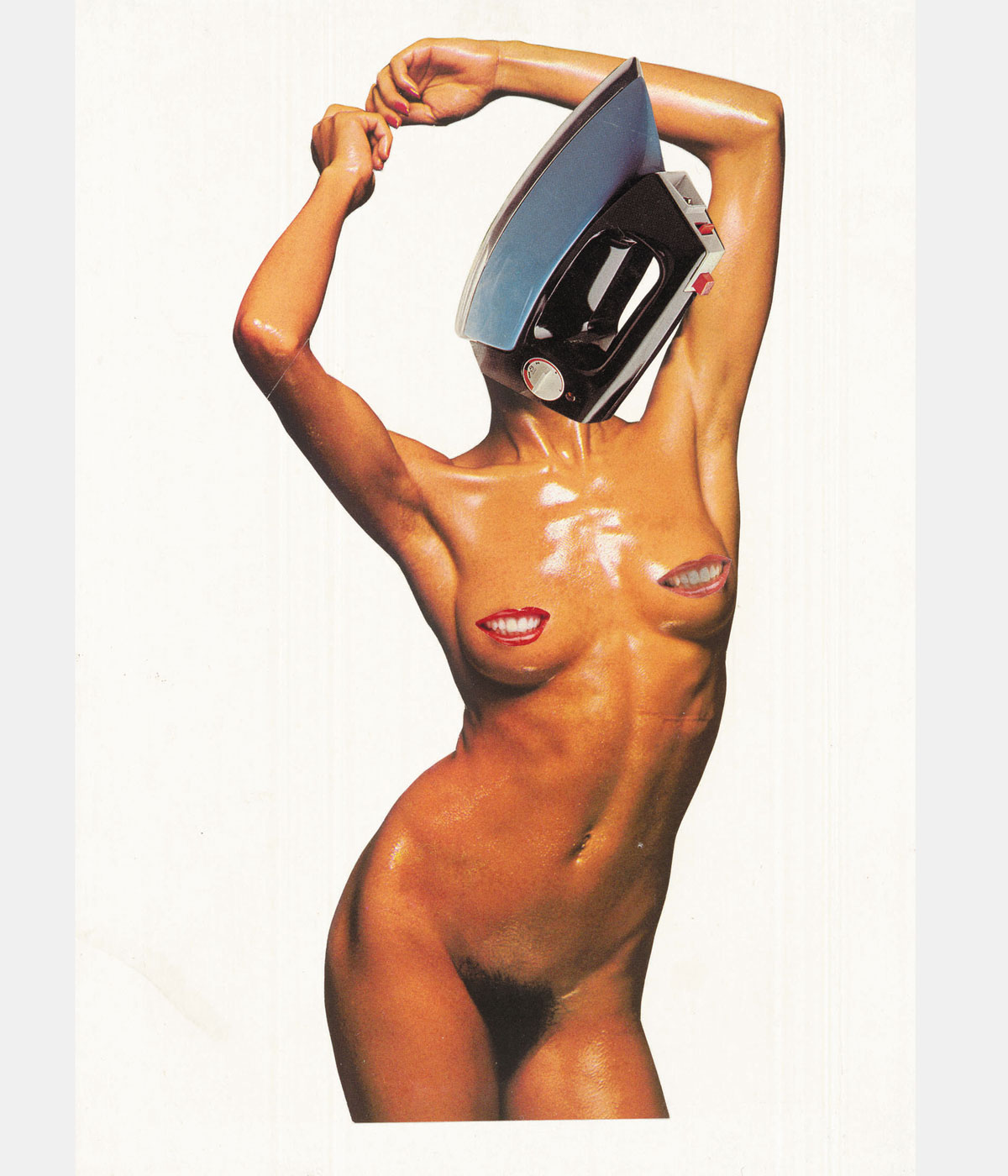
Untitled, Linder, 1976. Tate, purchased 2007. © Linder. Photo: Tate.
Taking centre stage here is arguably her most well-known work, the photomontage she created in 1977 for the cover of Buzzcocks’ debut single ‘Orgasm Addict’, which cemented her place in the punk and post-punk landscape. At the time, she was studying graphic design at Manchester Polytechnic, exploring the art of photomontage, drawn to magazine images depicting ‘women’s interests’ - the home, fashion, romance - which she juxtaposed against men’s (pornography, DIY, cars).
Using a surgical scalpel, Linder literally slices through these stereotypes in fluid pastiches that criss-cross conventional gender roles, turning the male gaze on its head while her subjects’ lose theirs. Depicting a naked woman with smiling mouths on her breasts and an iron where her head should be, the image is both playful and disturbing. Confronting and celebrating the glamour inherent in the representation of the female body, Linder mischievously recontextualises it again, delighting in contrasts, an impulse which runs throughout all of her work.
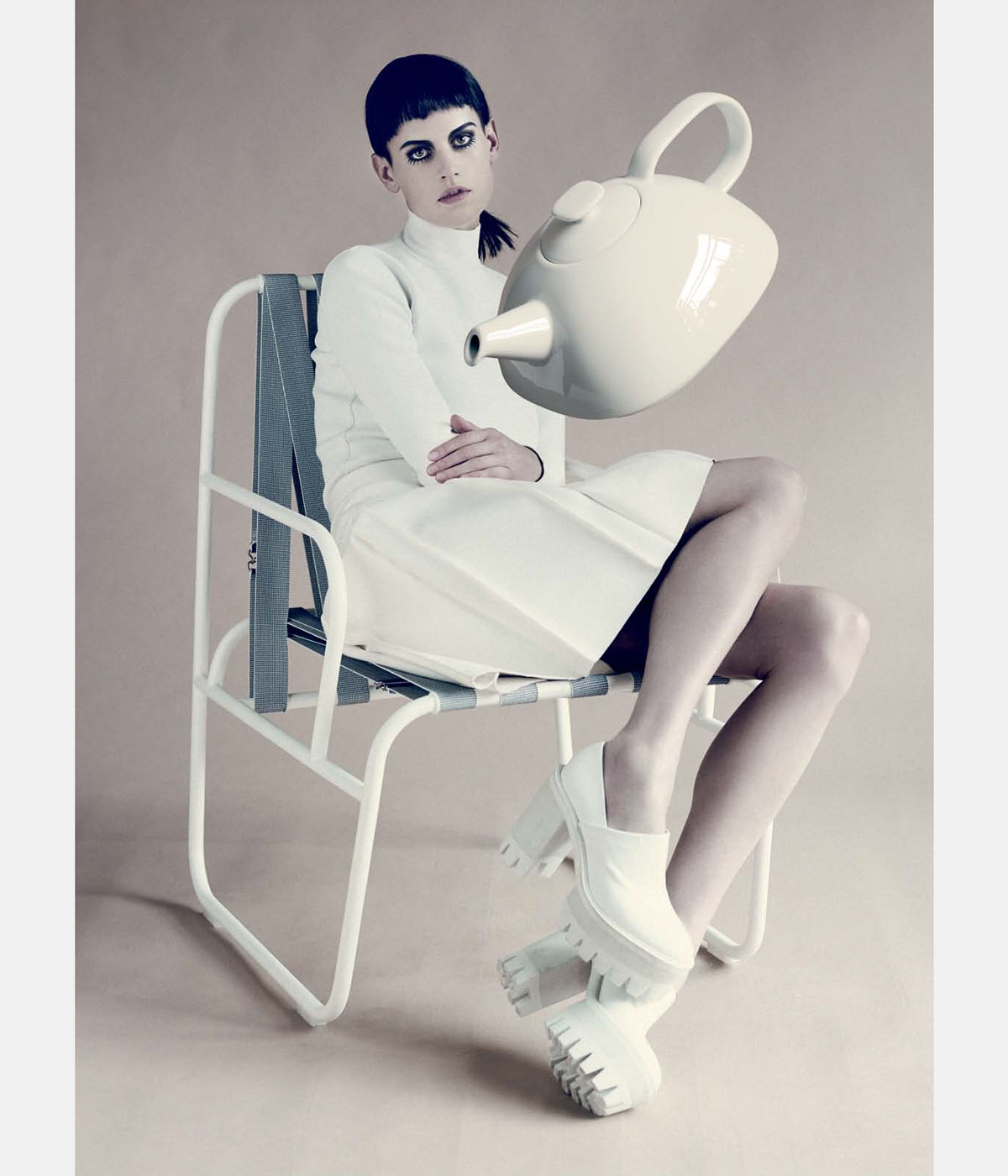
Linder's shoot for the September 2013 issue of Wallpaper*, created in collaboration with Paolo Roversi and Isabelle Kountoure
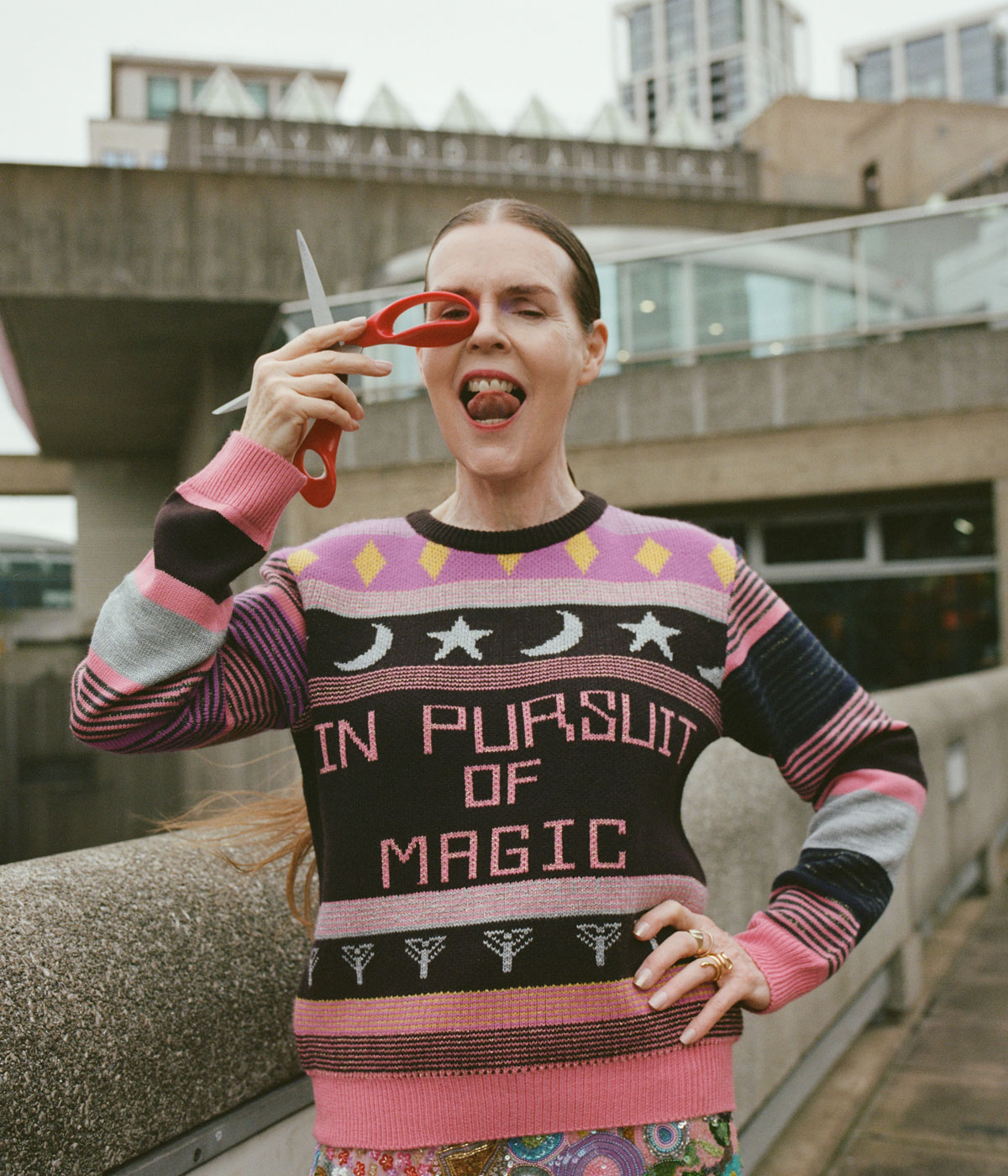
Linder at the Hayward Gallery. Photo: Hazel Gaskin. Outfit: Ashish. Make-up: Kristina Ralph Andrews. Courtesy the artist and Hayward Gallery.
‘There is a mischievousness sometimes in placing one huge caterpillar or a cucumber over the genital area,’ she says. ‘There is almost a childlike glee, but then it's also a critique - it’s a gag, a joke, but a gag is also a word with many meanings. I like the good ‘gag,’ while at the same time being aware that those models are gaps. We don't know who they are because they're never allowed to speak. They're always anonymous. It’s witty, having a light touch with often quite disturbing material that is so exploitative of other subjects. I’m from Liverpool - making jokes is in the DNA.’
There’s a warmth in Linder’s work, seen not only in the recontextualisation of occasionally alarming imagery and in her celebration of women’s bodies and queer bodies but also in her elevation of the mundane objects which make up a life. ‘It's all about this elevation, revering that photograph taken in 1976, where she [the subject] would have had to do about 20 different poses. There’s an empathy almost in trying to travel back and adding flowers, or a bouquet, like one would to a ballet dance stage, getting into those images to perfume them.’
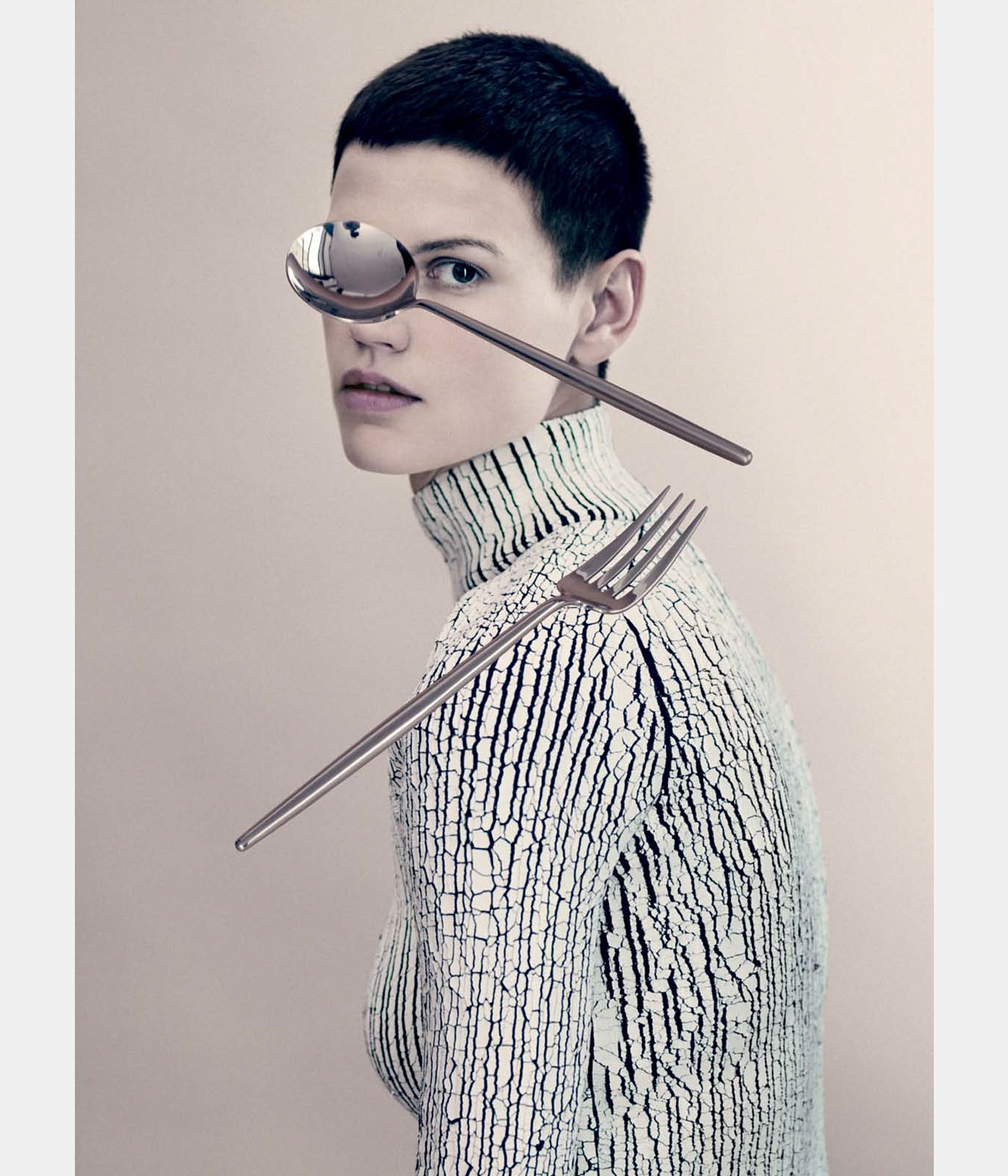
Linder's shoot for the September 2013 issue of Wallpaper*, created in collaboration with Paolo Roversi and Isabelle Kountoure
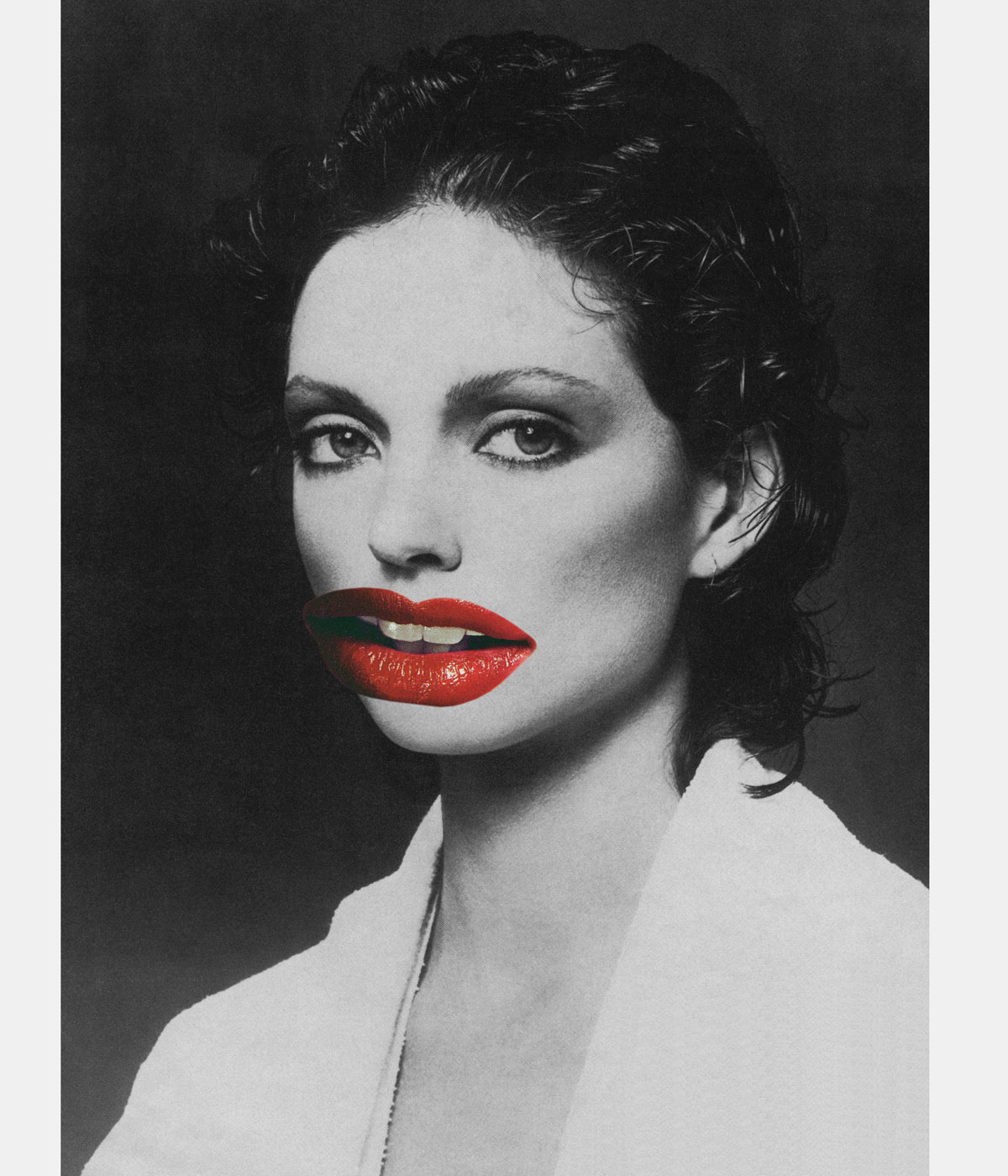
Linder, Untitled, 1979. © Linder Sterling. Courtesy of the artist; Modern Art, London; BLUM, Los Angeles, Tokyo, New York; Andréhn-Schiptjenko, Stockholm, Paris and dépendance, Brussels
Linder has spoken before about being exposed to pornography from the age of three by her grandfather, who also subjected her to sexual assault. ‘With this pornography, and maybe for me, I think because I was little, I'd always be looking at their faces. I didn't really want to be looking at the bodies. And I think maybe - this is the first time I’ve thought this - maybe that's circling back, and now I can lay them to rest. I can make them really tender.’ In cutting out the heads in her own work, Linder is protecting these women, with domestic utensils often thought to encumber women here making them mighty, cyborg-like, ready for battle.
Receive our daily digest of inspiration, escapism and design stories from around the world direct to your inbox.
Many moments in the exhibition are tender, often surprisingly so, particularly in the tribute she pays to her late father with a series of photographs of herself and a friend ‘sploshing’ - the fetishistic practice of using food in a playful, messy and sexual way. In the intertwining of fetish and desire, tenderness and deep love, it is yet another uniting of two states which perhaps aren’t as antithetical as they may at first appear to be.
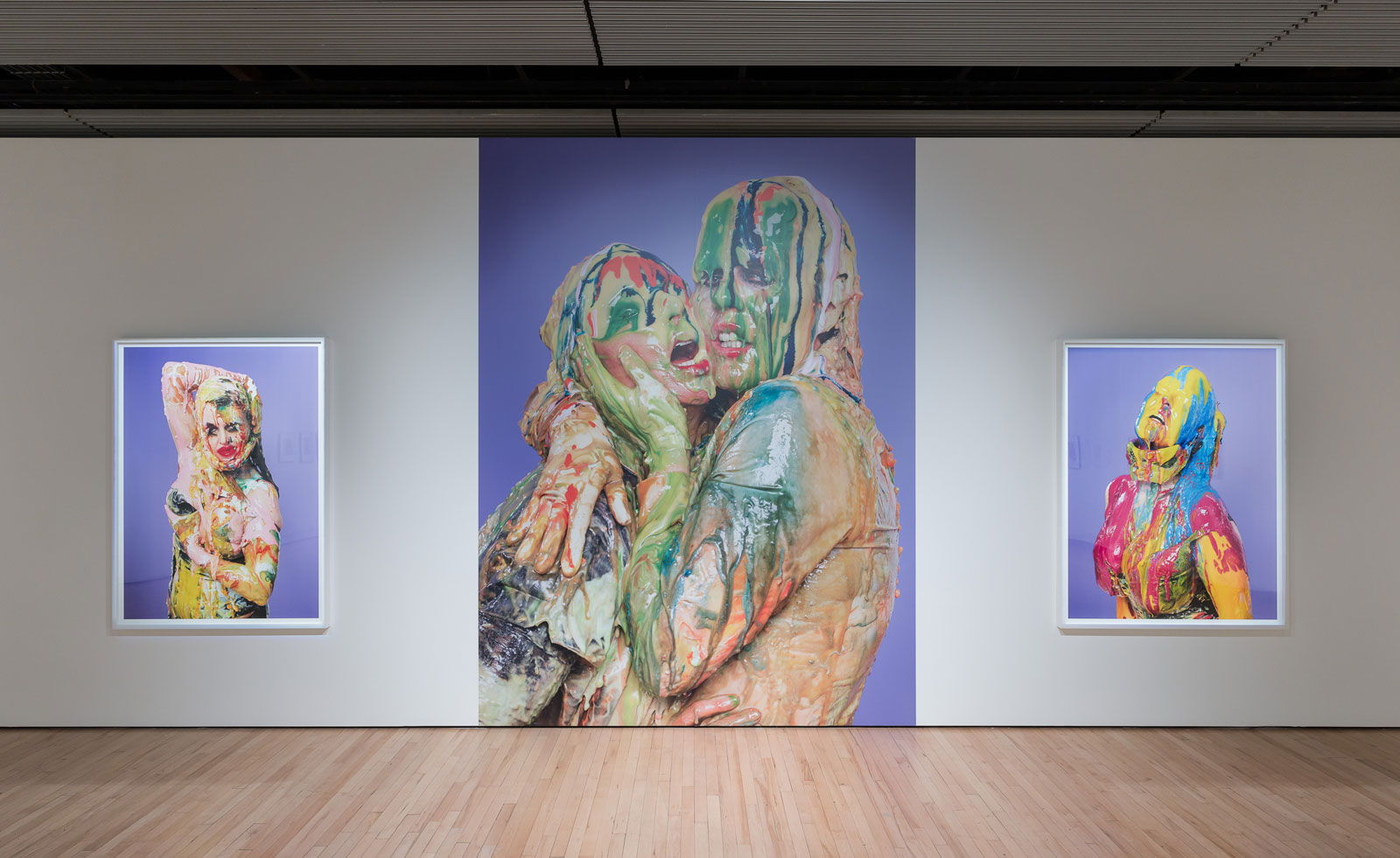
Installation view of Linder: Danger Came Smiling. L-R: Danse Sacrale (L'Élue) (2011); Action Rituelle des Ancêtres (2011); Glorification de l'Élue (2011). Photo: Mark Blower. Courtesy the artist and the Hayward Gallery.
‘I was very close to my father, he was so active at 84, and then he had a stroke. It was cruel. To keep his dignity in hospital, I used to feed him sweet, institutional food, like custard and yoghurt. After he died, I was aware of sploshing, which seems very British English in a way, it couldn’t ever have come from any other country, this fetish where women are covered in fake beans, head to toe. So to do that, in a session with a close friend, was so cathartic. Tin upon tin of custard, rice pudding, food colouring, honey, yogurt, cream, head to toe. It was incredible, really, and moving. We don't really have rights of passage anymore. So I was really happy with showing it here, really blown up so you can see every grain of rice. At that time I was bloated with tears, I couldn't cry. So that felt good too.’
Throughout fifty years of work is Linder’s love for print. ‘There's more than a century of print media in the show. We do get some idea that print media itself is never static, the technology is always evolving. I love playing with the materiality of print, and its smell and texture. Pixels have no perfume.’
'Linder: Danger Came Smiling' is at the Hayward Gallery, London, until 5 May 2025
Hannah Silver is the Art, Culture, Watches & Jewellery Editor of Wallpaper*. Since joining in 2019, she has overseen offbeat art trends and conducted in-depth profiles, as well as writing and commissioning extensively across the worlds of culture and luxury. She enjoys travelling, visiting artists' studios and viewing exhibitions around the world, and has interviewed artists and designers including Maggi Hambling, William Kentridge, Jonathan Anderson, Chantal Joffe, Lubaina Himid, Tilda Swinton and Mickalene Thomas.
-
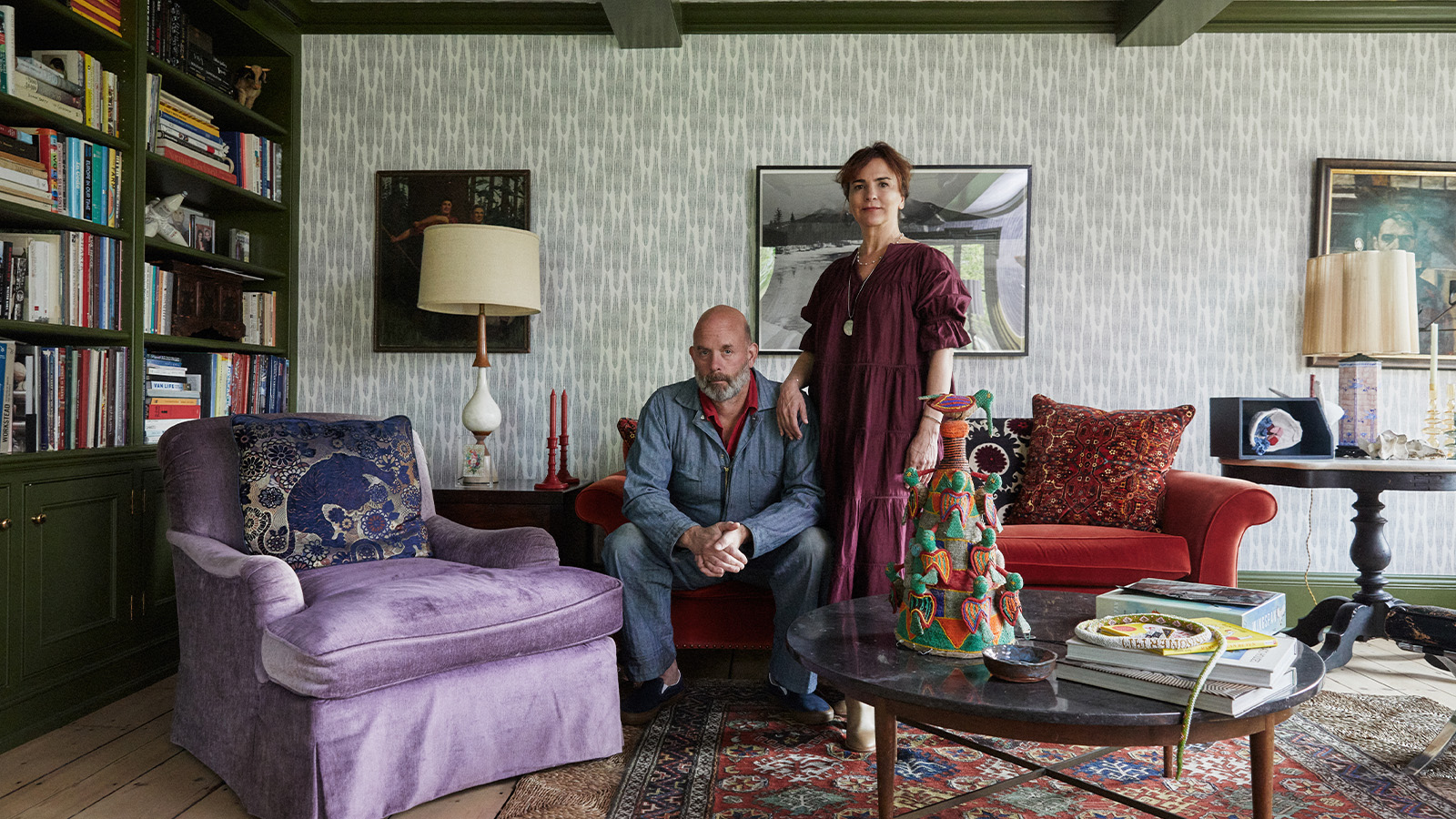 How We Host: Interior designer Heide Hendricks shows us how to throw the ultimate farmhouse fête
How We Host: Interior designer Heide Hendricks shows us how to throw the ultimate farmhouse fêteThe designer, one half of the American design firm Hendricks Churchill, delves into the art of entertaining – from pasta to playlists
-
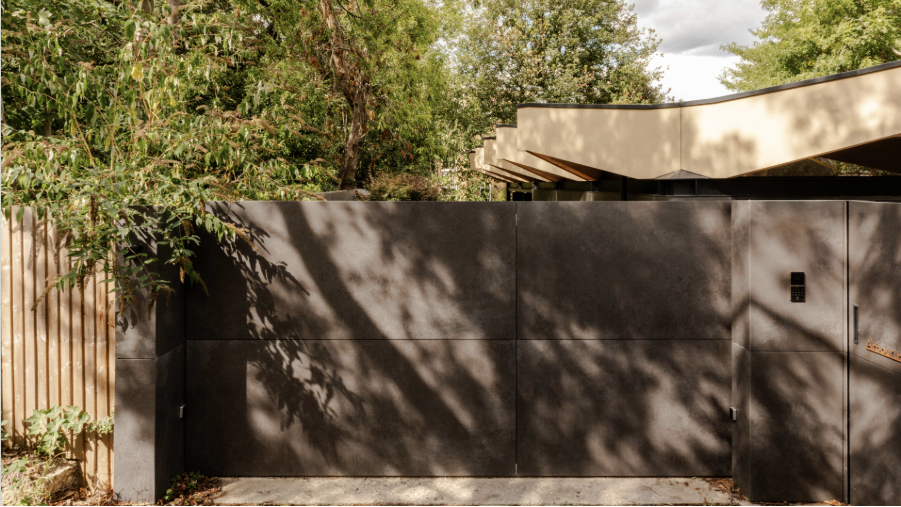 Arbour House is a north London home that lies low but punches high
Arbour House is a north London home that lies low but punches highArbour House by Andrei Saltykov is a low-lying Crouch End home with a striking roof structure that sets it apart
-
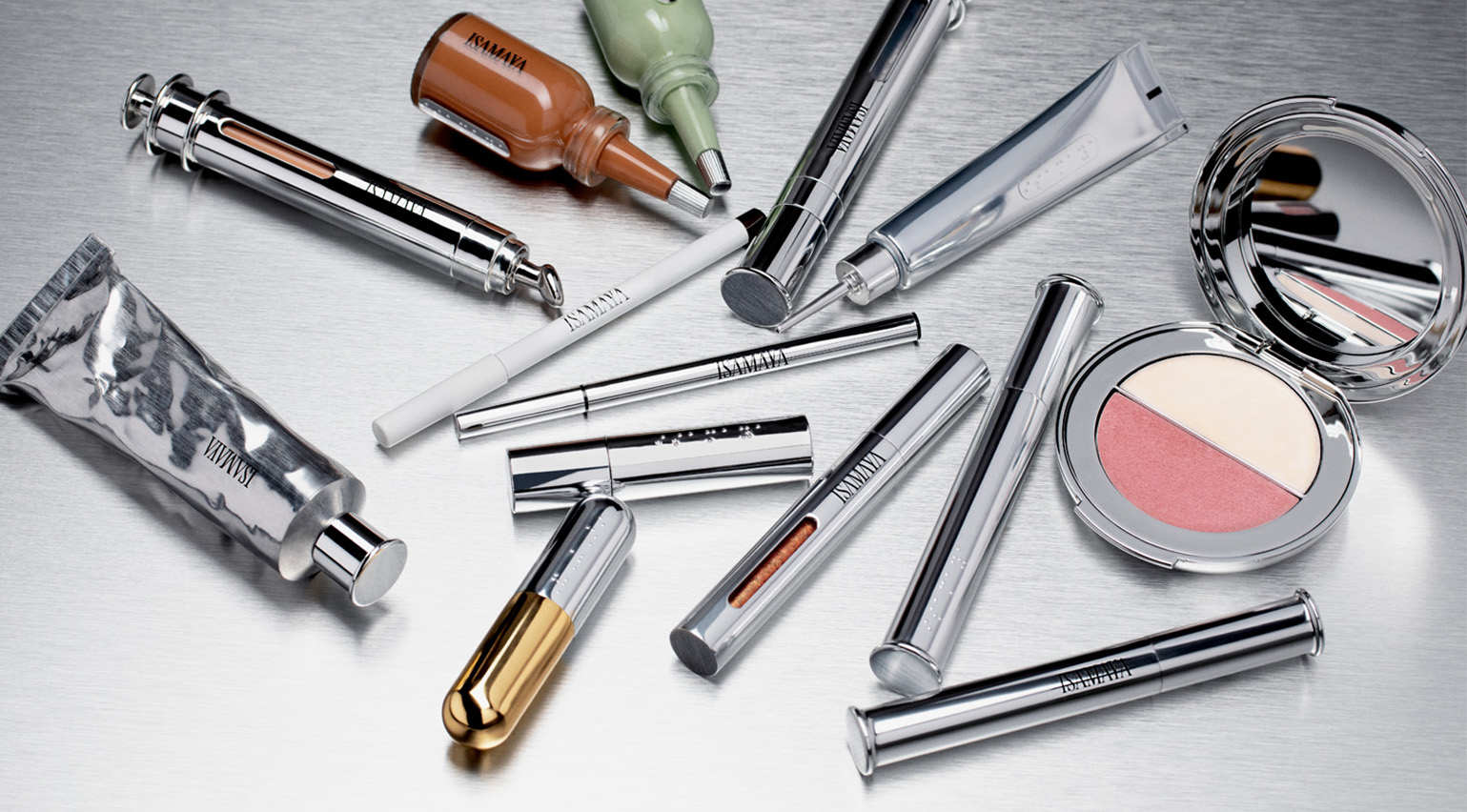 25 of the best beauty launches of 2025, from transformative skincare to offbeat scents
25 of the best beauty launches of 2025, from transformative skincare to offbeat scentsWallpaper* beauty editor Mary Cleary selects her beauty highlights of the year, spanning skincare, fragrance, hair and body care, make-up and wellness
-
 Out of office: The Wallpaper* editors’ picks of the week
Out of office: The Wallpaper* editors’ picks of the weekFar from slowing down for the festive season, the Wallpaper* team is in full swing, hopping from events to openings this week. Sometimes work can feel like play – and we also had time for some festive cocktails and cinematic releases
-
 The Barbican is undergoing a huge revamp. Here’s what we know
The Barbican is undergoing a huge revamp. Here’s what we knowThe Barbican Centre is set to close in June 2028 for a year as part of a huge restoration plan to future-proof the brutalist Grade II-listed site
-
 Out of office: The Wallpaper* editors’ picks of the week
Out of office: The Wallpaper* editors’ picks of the weekIt’s wet, windy and wintry and, this week, the Wallpaper* team craved moments of escape. We found it in memories of the Mediterranean, flavours of Mexico, and immersions in the worlds of music and art
-
 Each mundane object tells a story at Pace’s tribute to the everyday
Each mundane object tells a story at Pace’s tribute to the everydayIn a group exhibition, ‘Monument to the Unimportant’, artists give the seemingly insignificant – from discarded clothes to weeds in cracks – a longer look
-
 Out of office: The Wallpaper* editors’ picks of the week
Out of office: The Wallpaper* editors’ picks of the weekThis week, the Wallpaper* team had its finger on the pulse of architecture, interiors and fashion – while also scooping the latest on the Radiohead reunion and London’s buzziest pizza
-
 Out of office: The Wallpaper* editors’ picks of the week
Out of office: The Wallpaper* editors’ picks of the weekIt’s been a week of escapism: daydreams of Ghana sparked by lively local projects, glimpses of Tokyo on nostalgic film rolls, and a charming foray into the heart of Christmas as the festive season kicks off in earnest
-
 Wes Anderson at the Design Museum celebrates an obsessive attention to detail
Wes Anderson at the Design Museum celebrates an obsessive attention to detail‘Wes Anderson: The Archives’ pays tribute to the American film director’s career – expect props and puppets aplenty in this comprehensive London retrospective
-
 Meet Eva Helene Pade, the emerging artist redefining figurative painting
Meet Eva Helene Pade, the emerging artist redefining figurative paintingPade’s dreamlike figures in a crowd are currently on show at Thaddaeus Ropac London; she tells us about her need ‘to capture movements especially’